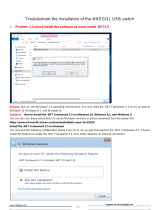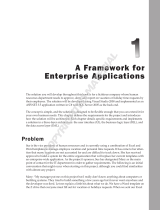
Copyright © 2008 Microsoft Corporation
2
The information contained in this document, including URL and other
Internet Web site references, is subject to change without notice.
Unless otherwise noted, the example companies, organizations,
products, domain names, e-mail addresses, logos, people, places, and
events depicted herein are fictitious, and no association with any real
company, organization, product, domain name, e-mail address, logo,
person, place, or event is intended or should be inferred. This
document is for informational purposes only. MICROSOFT MAKES NO
WARRANTIES, EXPRESS, IMPLIED OR STATUTORY, AS TO THE
INFORMATION IN THIS DOCUMENT. Complying with all applicable
copyright laws is the responsibility of the user. Without limiting the
rights under copyright, no part of this document may be reproduced,
stored in or introduced into a retrieval system, or transmitted in any
form or by any means (electronic, mechanical, photocopying, recording,
or otherwise), or for any purpose, without the express written
permission of Microsoft Corporation. Microsoft may have patents,
patent applications, trademarks, copyrights, or other intellectual
property rights covering subject matter in this document. Except as
expressly provided in any written license agreement from Microsoft,
the furnishing of this document does not give you any license to these
patents, trademarks, copyrights, or other intellectual property. The
example companies, organizations, products, people and events
depicted herein are fictitious. No association with any real company,
organization, product, person or event is intended or should be
inferred. © 2008 Microsoft Corporation. All rights reserved. Microsoft
Customer Care Framework is a trademark of Microsoft Corporation in
the United States and/or other countries. The names of actual
companies and products mentioned herein may be the trademarks of
their respective owners.


















